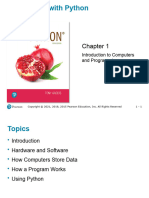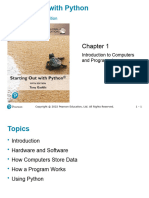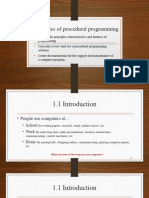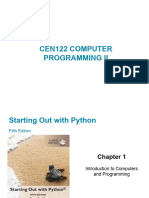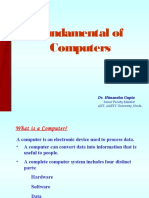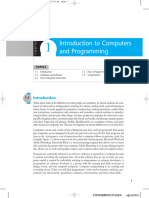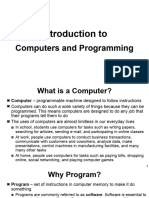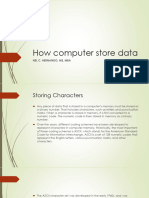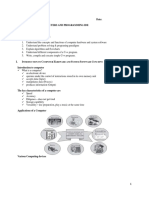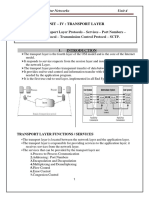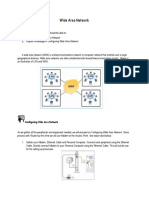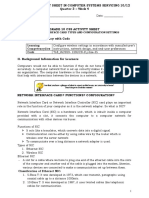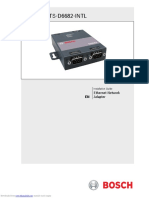0% found this document useful (0 votes)
77 views62 pagesGaddis Python 4e Chapter 01 PPT - combinedForLesson1
The document provides an introduction to computers and programming, covering topics such as hardware and software, how computers store data, how programs work, and using Python. It discusses the central processing unit, memory, storage devices, input and output devices, and how software controls computer operations.
Uploaded by
YİĞİT KARAYURTCopyright
© © All Rights Reserved
We take content rights seriously. If you suspect this is your content, claim it here.
Available Formats
Download as PPT, PDF, TXT or read online on Scribd
0% found this document useful (0 votes)
77 views62 pagesGaddis Python 4e Chapter 01 PPT - combinedForLesson1
The document provides an introduction to computers and programming, covering topics such as hardware and software, how computers store data, how programs work, and using Python. It discusses the central processing unit, memory, storage devices, input and output devices, and how software controls computer operations.
Uploaded by
YİĞİT KARAYURTCopyright
© © All Rights Reserved
We take content rights seriously. If you suspect this is your content, claim it here.
Available Formats
Download as PPT, PDF, TXT or read online on Scribd
/ 62




